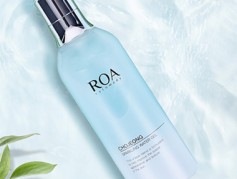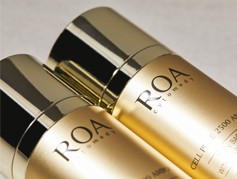
Hydration treatments, also commonly referred to as IV hydration therap…
Irving
2024-10-25 16:05
3
0
본문
1. Scalp Massages: Regular scalp massages can help stimulate blood circulation to the hair follicles, promoting hair growth and thickness. Massaging the scalp with essential oils such as rosemary or coconut oil can further enhance the effectiveness of this treatment.
3. Budget-Friendly Products:
While there are a plethora of hair care products on the market, you don't need to splurge on expensive brands to maintain healthy natural hair. Look for budget-friendly options at drugstores or online retailers that cater to natural hair. Opt for sulfate-free shampoos, silicone-free conditioners, and moisturizing creams that are gentle on your curls and won't strip your hair of its natural oils.
7. Be Patient and Consistent:
Remember that achieving healthy edges takes time and patience. Consistent care and maintenance are key to seeing results, so establish a routine that prioritizes the health of your edges. Monitor your progress and make adjustments as needed to cater to the specific needs of your edges.
6. Hair Transplant Surgery: For individuals with advanced hair loss, hair transplant surgery can be an effective option to restore thickness and volume to the hair. During the procedure, hair follicles are moved from denser areas of the scalp to thinning or balding areas.
2. DIY Hair Treatments:
One of the most cost-effective ways to care for natural hair is by making your own hair treatments at home. Common ingredients like coconut oil, olive oil, honey, and avocado can be used to create nourishing masks and deep conditioners. These DIY treatments can help moisturize, strengthen, and promote hair growth without spending a fortune on commercial products.
Hydration treatments are typically administered in a specialized clinic or by a healthcare professional trained in intravenous therapy. The process involves inserting a small needle into a vein, through which the hydration solution is delivered directly into the bloodstream. The duration of the treatment can vary depending on the specific fluids and nutrients being administered, but sessions typically last between 30 minutes to an hour.
In addition to hydration, IV therapy can also be customized to address specific concerns or goals. For example, some hydration treatments may include vitamins such as vitamin C, B vitamins, or antioxidants to boost immune function, improve energy levels, or support overall health. Minerals like magnesium and zinc can also be included to aid in muscle recovery, reduce inflammation, and support optimal cellular function.
Overall, wavy hair treatments aim to enhance the natural beauty of your waves while addressing any specific concerns you may have, such as frizz or lack of definition. By incorporating these treatments and techniques into your hair care routine, you can enjoy healthy, vibrant, and well-defined wavy hair.
In conclusion, hydration treatments offer a convenient and effective way to quickly rehydrate the body, replenish essential nutrients, and support overall health and well-being. Whether you are looking to recover from a night of indulgence, boost your energy levels, or enhance your athletic performance, hydration therapy may be a beneficial option to consider. Be sure to consult with a healthcare provider to determine if IV hydration therapy is right for you.
1. Know Your Hair Type:
Understanding your hair type is essential for effective care. Natural hair types are categorized into four main groups - Type 3 (curly), Type 4 (coily), and their subcategories. Knowing your hair type will help you choose the right products and techniques for your specific needs, saving you money on trial and error.
2. Gentle Handling and Styling:
Avoid harsh handling of your edges, such as tight ponytails, braids, or pulling on the hairline. Opt for gentle hairstyles that do not put excessive tension on the edges. Use satin or silk scrunchies and avoid using elastic bands that can cause breakage. When styling, be mindful of the amount of tension placed on your edges to prevent damage.
4. Protein Treatments: Wavy hair can benefit from protein treatments to strengthen the hair strands and improve elasticity. Look for protein-rich hair masks or treatments to help fortify your wavy hair and prevent breakage.
4. Protective Styling:
Protective styles such as braids, twists, and buns can help protect your hair from damage and breakage while promoting growth. These styles also reduce the need for daily manipulation and Wig styling for natural hair, saving you time and money in the long run. Experiment with different protective styles to find what works best for your hair type and preferences.
Hydration treatments are commonly used to address dehydration, which can occur due to various reasons such as strenuous exercise, illness, excessive alcohol consumption, or hot weather. Dehydration can lead to symptoms such as fatigue, dizziness, headaches, and dry skin. By delivering fluids and nutrients directly into the bloodstream, hydration treatments can quickly rehydrate the body and help alleviate these symptoms.
3. Budget-Friendly Products:
While there are a plethora of hair care products on the market, you don't need to splurge on expensive brands to maintain healthy natural hair. Look for budget-friendly options at drugstores or online retailers that cater to natural hair. Opt for sulfate-free shampoos, silicone-free conditioners, and moisturizing creams that are gentle on your curls and won't strip your hair of its natural oils.
7. Be Patient and Consistent:
Remember that achieving healthy edges takes time and patience. Consistent care and maintenance are key to seeing results, so establish a routine that prioritizes the health of your edges. Monitor your progress and make adjustments as needed to cater to the specific needs of your edges.
6. Hair Transplant Surgery: For individuals with advanced hair loss, hair transplant surgery can be an effective option to restore thickness and volume to the hair. During the procedure, hair follicles are moved from denser areas of the scalp to thinning or balding areas.
2. DIY Hair Treatments:
One of the most cost-effective ways to care for natural hair is by making your own hair treatments at home. Common ingredients like coconut oil, olive oil, honey, and avocado can be used to create nourishing masks and deep conditioners. These DIY treatments can help moisturize, strengthen, and promote hair growth without spending a fortune on commercial products.
Hydration treatments are typically administered in a specialized clinic or by a healthcare professional trained in intravenous therapy. The process involves inserting a small needle into a vein, through which the hydration solution is delivered directly into the bloodstream. The duration of the treatment can vary depending on the specific fluids and nutrients being administered, but sessions typically last between 30 minutes to an hour.
In addition to hydration, IV therapy can also be customized to address specific concerns or goals. For example, some hydration treatments may include vitamins such as vitamin C, B vitamins, or antioxidants to boost immune function, improve energy levels, or support overall health. Minerals like magnesium and zinc can also be included to aid in muscle recovery, reduce inflammation, and support optimal cellular function.
Overall, wavy hair treatments aim to enhance the natural beauty of your waves while addressing any specific concerns you may have, such as frizz or lack of definition. By incorporating these treatments and techniques into your hair care routine, you can enjoy healthy, vibrant, and well-defined wavy hair.
In conclusion, hydration treatments offer a convenient and effective way to quickly rehydrate the body, replenish essential nutrients, and support overall health and well-being. Whether you are looking to recover from a night of indulgence, boost your energy levels, or enhance your athletic performance, hydration therapy may be a beneficial option to consider. Be sure to consult with a healthcare provider to determine if IV hydration therapy is right for you.
1. Know Your Hair Type:
Understanding your hair type is essential for effective care. Natural hair types are categorized into four main groups - Type 3 (curly), Type 4 (coily), and their subcategories. Knowing your hair type will help you choose the right products and techniques for your specific needs, saving you money on trial and error.
2. Gentle Handling and Styling:
Avoid harsh handling of your edges, such as tight ponytails, braids, or pulling on the hairline. Opt for gentle hairstyles that do not put excessive tension on the edges. Use satin or silk scrunchies and avoid using elastic bands that can cause breakage. When styling, be mindful of the amount of tension placed on your edges to prevent damage.
4. Protein Treatments: Wavy hair can benefit from protein treatments to strengthen the hair strands and improve elasticity. Look for protein-rich hair masks or treatments to help fortify your wavy hair and prevent breakage.
4. Protective Styling:
Protective styles such as braids, twists, and buns can help protect your hair from damage and breakage while promoting growth. These styles also reduce the need for daily manipulation and Wig styling for natural hair, saving you time and money in the long run. Experiment with different protective styles to find what works best for your hair type and preferences.
Hydration treatments are commonly used to address dehydration, which can occur due to various reasons such as strenuous exercise, illness, excessive alcohol consumption, or hot weather. Dehydration can lead to symptoms such as fatigue, dizziness, headaches, and dry skin. By delivering fluids and nutrients directly into the bloodstream, hydration treatments can quickly rehydrate the body and help alleviate these symptoms.


